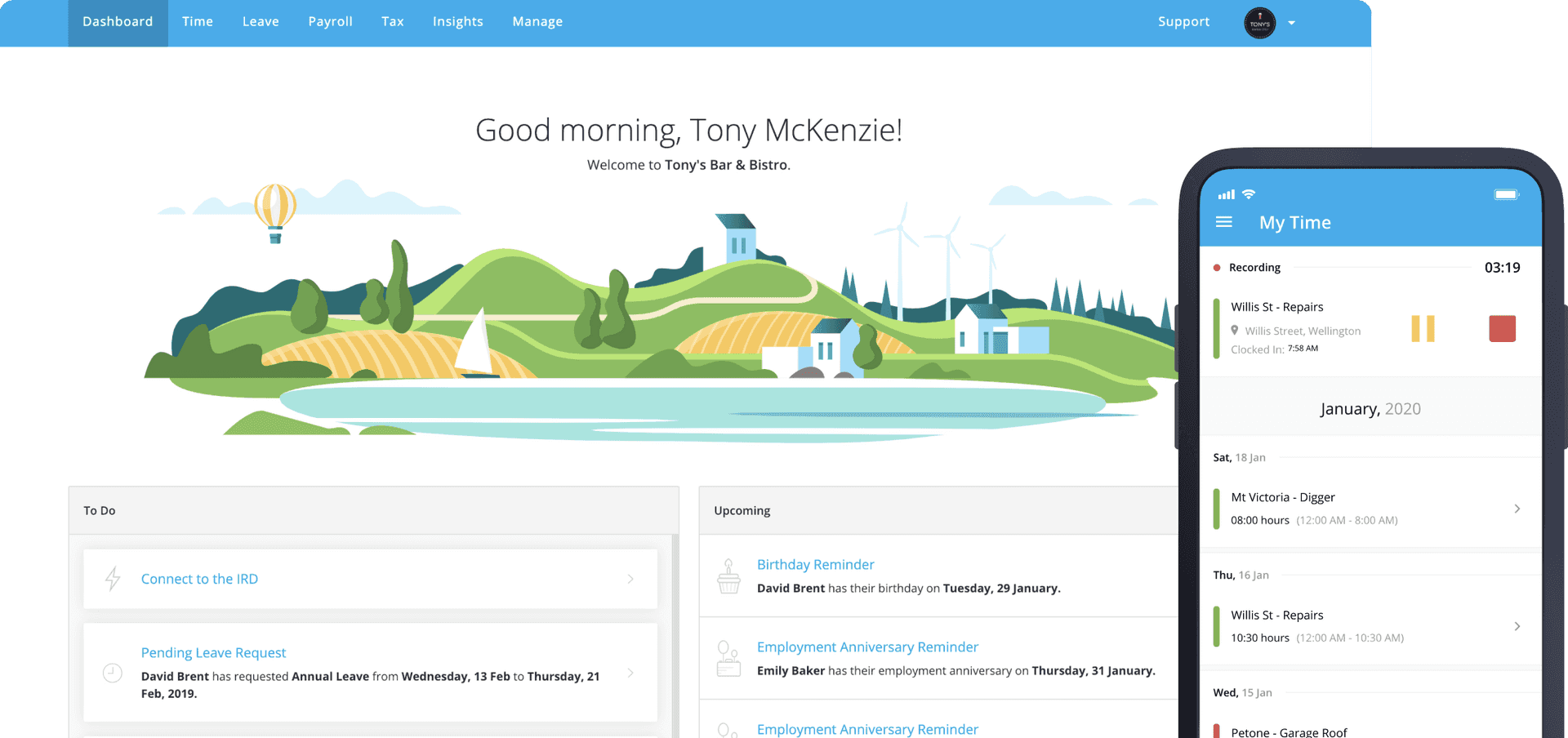Holidays Act
Sorting out the BS in the Holidays Act
August 5, 2015
BAPS in payroll-geek speak abbreviates Bereavement, Alternative, Public Holidays, Sick, the four leave types that are paid using the relevant or average daily rate in NZ.
In our series about how the Holidays Act could be simplified we previously addressed the AP of the BAPS. Time to finish off our series by looking at the BS.
We previously looked at how much easier leave would be if we replaced annual leave and public holidays with a 12% accrual in each pay. Can the same approach be applied to sick leave?
Five days sick leave a year equates to a 2% allowance (it’s actually 1.92%, but 2% is close enough, slightly to the advantage of the employee). So from each pay we put away 2% of their earnings, and 2% of their units.
When the employee comes to take sick leave we simply pay out the appropriate number of units and the same proportion of their 2% of earnings.
The only trick is what units to use? For employees with regular hours it’s not a problem, hours will do just fine. If your hours vary from day-to-day, week-to-week there’s potential for disagreement as to how much should be paid out for a sick day.
The answer is to use the number of days worked as the units. This is the same approach as the current legislation which only refers to sick leave balances in days.
There are some other advantages. Employees would no longer need to wait for the arbitrary 6 months before they can take a sick day. If a new employee takes a single day of sick leave in their first year, but it happens to be after 5 months of work, it seems crazy that it should not be paid, whereas had that day occurred a month later it would have been paid. With the 2% approach, the sick accruals are more evenly distributed.
The Holidays Act specifies a sick leave provision of five days per year for everyone, regardless of how many days an employee works. So an employee who works six day weeks accrues the same five days as an employee who works two days a week.
The 2% accrual approach seems more equitable. Since the sick leave you get is based on the days you work, it is proportional to the likelihood of you needing to take a work day off because of illness.
What about Bereavement leave? The unusual thing about this leave type is that there’s no available balance. It’s just used as required. Can it be handled without requiring 12 months of earnings to calculate the payment amount?
We can simply use the employee’s sick leave balances, and calculate the pay as if they were taking a day of sick leave. For example, if an employee has 2 days sick leave available and $1000 in their sick leave value bucket, then for a day of bereavement pay they would receive $1000 / 2 = $500. If there is insufficient sick leave balance to make a reasonable calculation then simply use the rate from the last time the employee took sick leave.
So that’s our approach to BS, and completes our series on suggested changes to the Holidays Act. What do you think? Are their any exceptions that would not work using this approach? Would these approaches work better in your business? I’d love to hear your thoughts – email me at sam.newton@flexitime.co.nz.






